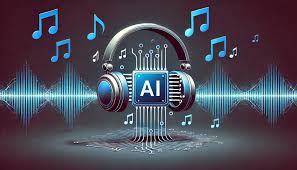Fast forward now to 2025, and as you ride that ever-evolving wave of artificial intelligence, you are reminded of how a text-to-music AI became an integral part of every composer and musician’s toolkit. GPT AI music generator: A new tool for songwriters You are trained on data until 2023 October So whether you are a professional artist looking to improve your pipeline or just a beginner wanting to push your creativity to new vistas, text-to-music AI is here to help. In this article, we explore how this cutting-edge technology can be used to write music more quickly and efficiently than ever, transforming your creative process and unlocking new possibilities for artistic expression.
What is Text to Music AI?
Text to Music AI is a pensum east of NLP and music. Data collection are from your early years of your life until October 2023. These platforms use the power of artificial intelligence to analyse written text and produce the appropriate musical aspects in response.
How It Works
Text to Music AI analyzes the semantic content, emotional tone and structural elements of your text using advanced algorithms. It then converts these elements into musical aspects like rhythm, harmony and instrumentation. The sort of sound scape that defines what the voice or sound is of your writing.
Applications and Benefits
Text to Music AI has many use cases and is very interesting. Custom soundtracks can help content creators evoke emotion in their storytelling, and musicians may hear sounds that inspire their new compositions. At the same time, this technology gives those without musical training a new avenue for expressing themselves musically, allowing music creation to be democratized.
By leveraging Text to Music AI, you can use a text to music converter to rapidly produce original scores, saving time and resources in various creative projects.
How Text to Music AI Can Compose Music Quickly
From the ever-changing world of text to music AI another development has taken place that’s revolutionizing in every way how musicians and composers compose melodies and create acoustics: with the push of a button new soundscapes emerge in seconds. With the power of a text to music AI, you will be able to cut down on your creative process, and still create high quality compositions in a fraction of the time it takes traditionally.
Instant Inspiration
All you need is to enter some descriptive text or lyrics, and that will kick the creative engine of the AI machine. It quickly processes your words and renders them into musical components that can give you an immediate springboard for your composition.
Customizable Output
AI platforms which convert text to music today are highly configurable. You specify what genre, tempo, instrumentation, and even mood you want, and the AI will then create music that matches your vision. This flexibility means you can use a text to music AI in a range of projects from film scores to pop singles.
Collaborative Potential
When integrated into the songwriting process, these A.I. tools can act like virtual collaborators ones that can offer new ideas and inspire unconventional musical paths. Iterating with the AI can offer an exploration of new creative spaces and the refinement of your compositions ultimately enhancing your artistic output.
Top 5 Text to Music AI Tools to Try in 2025
Much like how you can leverage a text to music AI to rapidly create original melodies, the best AI tools to try in 2025 probably won’t have changed much. Here are five that you might want to consider:
1. MelodyMind
This AI composer interprets your text prompts and produces lush orchestral scores. MelodyMind uses its extensive sample library and state-of-the-art natural language processing to create music that captures the emotional essence of your words.
2. LyricTune
Focusing on pop and rock styles, LyricTune uses your lyrics to create catchy hooks and instrumental backing tracks. And its style-matching algorithm guarantees that the music will suit the mood you had in mind.
3. SoundScribe
SoundScribe generates atmospheric soundscapes and background music based on scene descriptions and is perfect for film and game composers. Its adaptive engine makes real-time adjustments as you hone your vision.
4. BeatBot
BeatBot creates rhythmic patterns and bassline grooves from text intended for electronic and hip-hop producers. Its massive preset library spans innumerable subgenres, but it still leaves room for custom sound design.
5. HarmonyHive
This collaborative tool allows many users to enter ideas at once, intertwining them into a seamless narrative. Great for remote song writing sessions and teaching environments.
Conclusion
Fast forward to 2025, and the emergence of text-to-music AI will redefine how you compose and create. With the power of AI at your side, you can easily create unique melodies, harmonies, and full-on compositions from simple text prompts within minutes. This app gives you the power to push new creative boundaries and create music faster than before. Although AI will not take the place of humativity, it will be an invaluable tool like Peerji.com to amplify your music making abilities and workflow. Getting comfortable with text-to-music AI today will also help you hit the ground running for when it does go mainstream. The future of music creation is indeed bright, and text-to-music AI will be a key drivers in learning how that future will look like.


